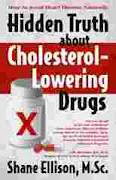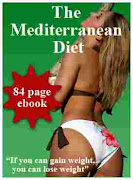The key to healthy and enjoyable meal is having a basic understanding of nutrition.The knowledge of food gives you control and allow you to make good choices about how you eat, as opposed to what the food manufacturers would like you to eat.
The availability of wide variety of foods now in the market, has given us a good range of choices than before. The question is are you making the best of it?
The science of nutrition has grown progressively over the last two decades and now provides us with a firm foundation on how to make recommendations for a healthy eating.
It is now very clear to us that a poor nutrition will increase the risk of heart and other various diseases, while good nutrition can substantially reduce these risks.
Because different food contain many different types of nutrient in various proportions, no single food can provide you with all the nutrient you need for a balanced diet. This why variety in your diet is very important because it allows you to obtain different nutrient from a wide range of sources. This can be best achieved by choosing food from these five main food groups daily.
Group 1 - Carbohydrates: Is a dietary source of glucose that is very important to our body and they come in two main forms – simple and complex sugar.
The simple sugar are the simplest form of carbohydrate and comes as one or two molecule combination, i.e.:
Monosaccharides (one molecule sugar) - glucose, galactose and fructose.
Disaccharides (two molecule sugar) - lactose, maltose and sucrose.
Glucose , the one we call blood sugar is found mainly in all fruits and vegetables. Fructose been the sweetest known natural sugar, is found in honey and some sweet fruits.
The diasaccharides which are monosaccharides linked together always contain at least one molecule of glucose. Lactose which is made up of glucose and galactose is mainly found in milk sugar. Maltose is found in malted milk drinks and it’s made up of two glucose molecules. While sucrose, our familiar white packet sugar is made up of glucose and fructose.
Simple sugar stimulates the release of insulin and, since insulin is related to hunger, you’ll tend to feel hungry again in less time than with a complex sugar
Although the consumption of white sugar may have fallen dramatically in the U.S. and U.K, still other source of sugar such as candies, chocolates and confectioneries continues to make a large contribution to our daily diet. In fact, it's quite difficult to find any processed food that doesn’t contain at least some amount of sugar.
The complex sugar, on the other hand, are made up of glucose but unlike the simple sugar, they do not dissolve in water and need cooking before it could be digested. Examples are flour, pastas, beans, bread and potatoes.
believe this, sugar is not as evil as we are meant to believe, in fact it is very essential for a balance diet and for a healthy meal, but caution and moderation is required.
Group 2 - Dietary fiber: or roughage is a form of carbohydrate. It forms the cell wall of plant foods. It is the part of our food that is not digested by our body. Fiber comes in two forms, the soluble and the insoluble fiber. The soluble fiber is are found in oatmeal, lentil, peas, beans, citrus fruits, apples, bananas and some vegetables. They dissolve in water and form gel in the stomach and helps lower level of blood cholesterol, especially the bad cholesterol.
The insoluble fiber helps to promoted soft bulky stool. You get this type of dietary fiber from whole grain meal, nuts, breakfast cereals, bran products and brown rice. Eat more of wholemeal bread which contains twice as much fiber as which bread.
Generally increase your consumption of fiber, particularly soluble fiber. And if you must drink alcoholic beverage, consume in moderation. Lower or if necessary avoid foods high in cholesterol e.g eggs, liver, kidney,red meat. Choose complex sugar over simple sugar. Reduce salt intake because salt is linked to development of blood pressure and drink plenty of water. Eat to live and live to eat. Enjoy!
To learn more about eating for a healthy heart Call 1-800-AHA-USA1 (1-800-242-8721) or visit http://www.americanheart.org
Knowledge is power, so Learn and Live!
Eating for a Healthy Heart – part 1
10:42 AM | balanced diet, blood pressure, cholesterol, dietary fibre, glucose, processed food, sucrose | 0 comments »
Subscribe to:
Post Comments (Atom)





0 comments
Post a Comment